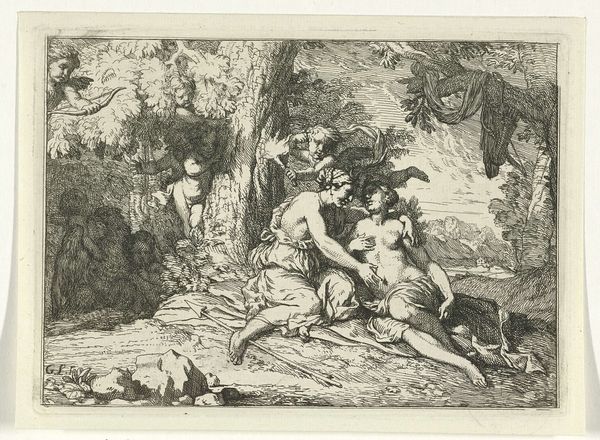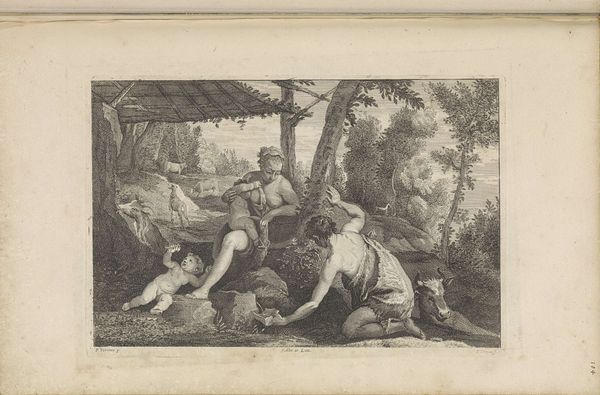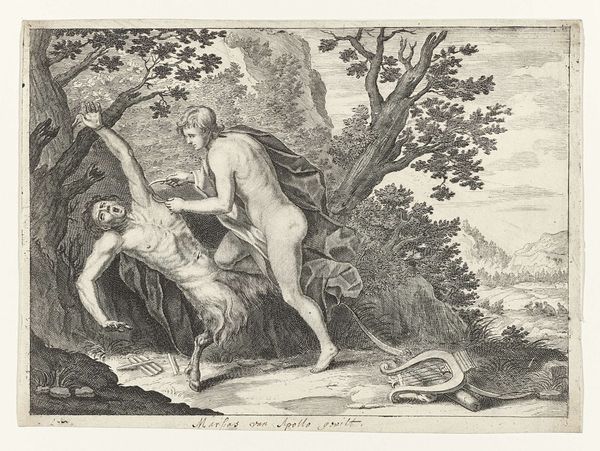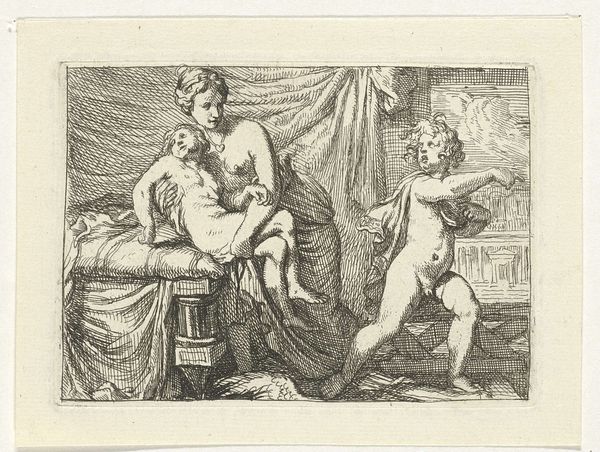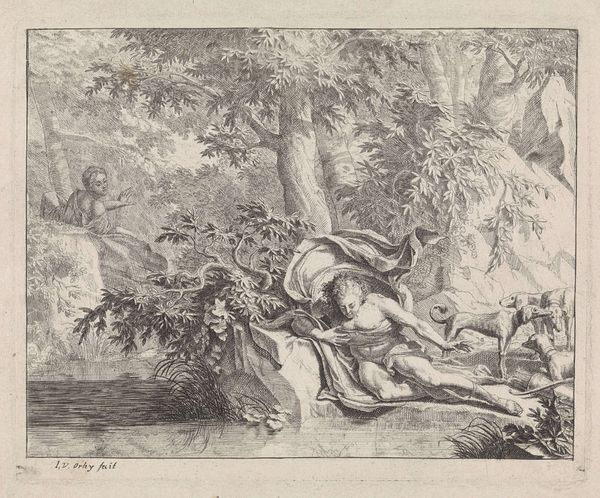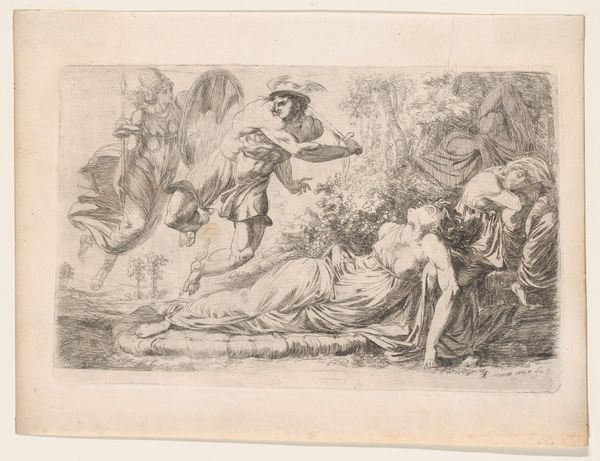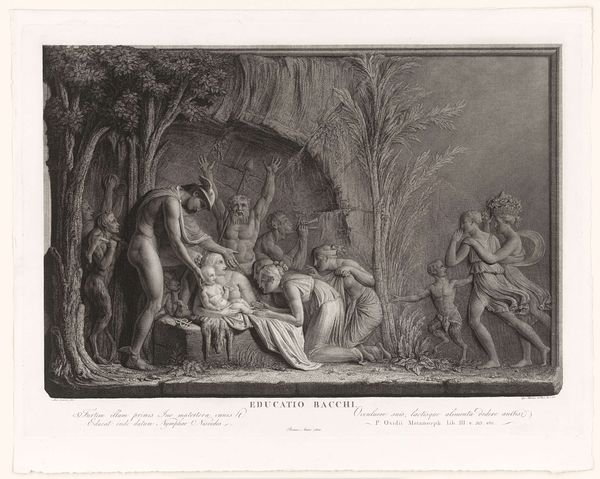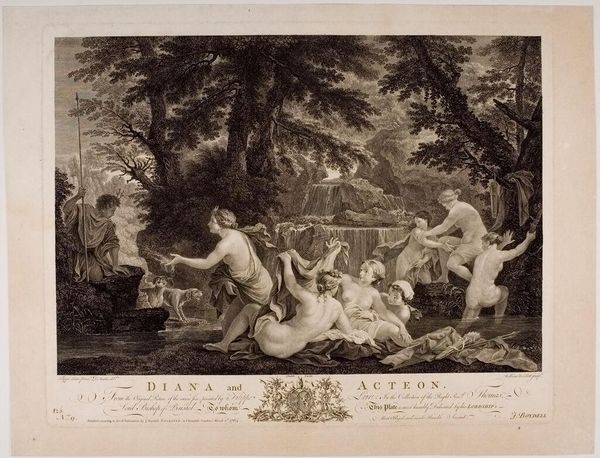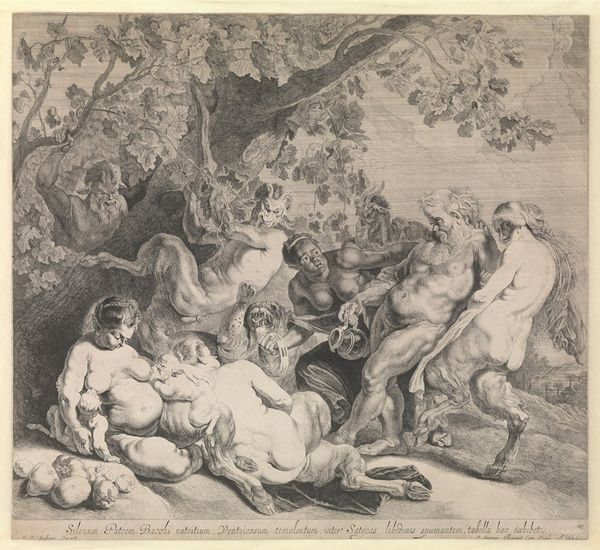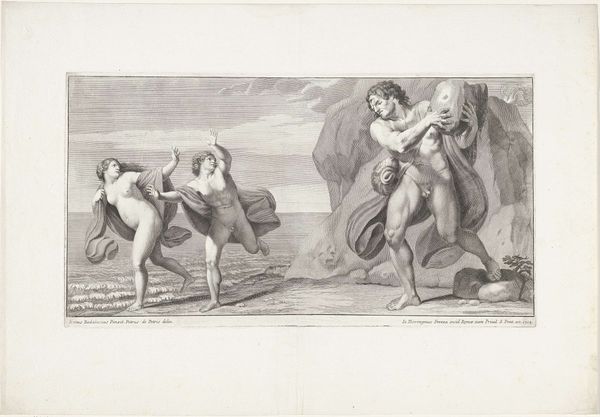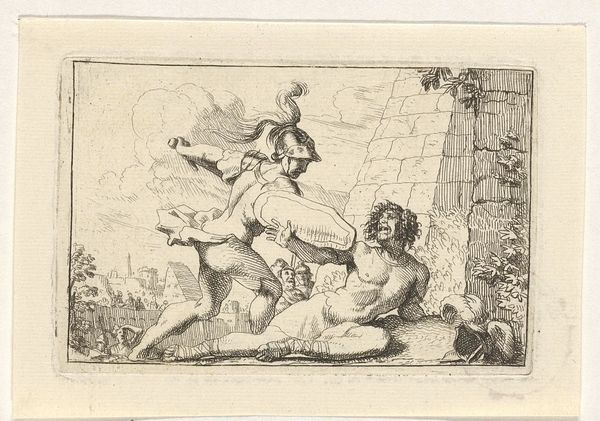
engraving
#
allegory
#
narrative-art
#
baroque
#
old engraving style
#
figuration
#
history-painting
#
engraving
Dimensions: height 352 mm, width 480 mm
Copyright: Rijks Museum: Open Domain
Curator: Look closely at this engraving titled "Hermes Orders Calypso to Release Odysseus." It’s from 1670, attributed to Gerard Valck, and housed here at the Rijksmuseum. Editor: It has a rather languid feeling, even for a Baroque piece. All that draping and reclining... There is an almost bored tension to the poses of these characters. Curator: Indeed. Valck has used linear precision to create a rich interplay between the figures. Note the positioning of Calypso and Odysseus—a study in diagonal lines against the vertical authority of Hermes descending from the heavens. Editor: Speaking of Hermes, what's with the little soldier? The messenger god, shown with his iconic staff, isn't usually presented by the toddler in a plume helmet carrying what looks like a theater prop sword... He appears staged. Curator: The composition invites us to consider the story being told, the pivotal moment where divine intervention disrupts the idyll of Calypso's island. The theatricality highlights the Baroque interest in dramatic narrative. Editor: I find it somewhat unsettling to see a god served by a child dressed for war, it suggests themes about societal roles and expectations of innocence that, in this artistic period, often mirrored, if not enabled, power structures that benefited ruling houses. Curator: That tension you note contributes to the print's dynamism. Also note how the line work gives depth and texture, from the billowing clouds to the sheen of skin and fabric. It's an engraving, remember, and the details achieved here are striking, almost painterly. Editor: Absolutely, this era witnessed a boom in disseminating images widely via print, and artists used mythology to advance ideas and allegories favored by royal patronage... A commentary perhaps on the monarch's right to rule and interfere, similar to these capricious Greek gods! Curator: It is through such attention to these carefully constructed details and symbols that Valck draws us into this world, making us active participants in this dramatic scene. Editor: This piece pushes you to contemplate, I feel, how authority is presented—as divinely inspired but perhaps rooted in social artifice and theater... Curator: Agreed. It gives us an intriguing insight into not just a story, but how stories themselves were politically valuable artifacts, both told and consumed in the 17th Century.
Comments
rijksmuseum about 2 years ago
⋮
De Lairesse was well versed in the classics. Here he portrayed a story in Homer’s Odyssey, the epic poem about Odysseus’ wanderings after the fall of Troy. During his journey the Greek hero lands on Ogygia, the island ruled by the goddess Calypso. She falls in love with him, and detains him for seven years. Ultimately the Olympian gods prevail upon her, through their messenger Hermes, to release Odysseus.
Join the conversation
Join millions of artists and users on Artera today and experience the ultimate creative platform.
